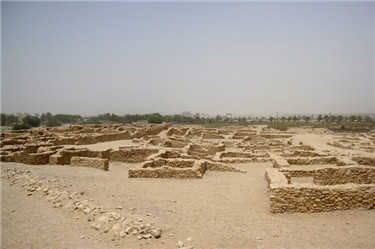
Photo credit: Rapid Travel Chai
圖片引自:Rapid Travel Chai
2、Dilmun Civilization
兩河流域文明
An important trading civilization in its heyday, Dilmun encompassed an area consisting of present-day Bahrain, Kuwait, and parts of Saudi Arabia. Although very little concrete evidence has been found as of yet, scholars believe that a few sites, namely Saar and Qal’at al-Bahrain, are ancient settlements of the Dilmun people. Saar is still being investigated, but a large number of the artifacts that have already been found there date to the third millennium B.C., lending credence to the theory that it was built by the Dilmun civilization.
兩河流域在其鼎盛時期是一個重要的貿易文明,流經包括如今的巴林、科威特以及部分沙特阿拉伯地區,雖然迄今為止幾乎沒有發現什么具體的證據,但是學者們認為一些遺址,也就是薩爾和巴林島的卡拉特考古遺址,是古代兩河流域的人民定居的地方。薩爾仍然在被考古調查中,但是已經發現了大量追溯到公元前3000年的文物,印證了它始建于兩河流域文明的傳言。
Dilmun was a major commercial player in its day, with control over the Persian Gulf trading lanes and a communication network that reached as far away as Turkey. Numerous water springs flow all across the area, which researchers believe may have led to the legend of Bahrain being the Biblical Garden of Eden. In addition, Enki, the Sumerian god of wisdom, was said to have lived in the underground springs. Described as “the place where the sun rises,” Dilmun played a large role in Sumerian mythology; according to legend, Dilmun was the place where Utnapishtim was taken to live for eternity.
在兩河流域文明盛行的時代,兩河流域控制著波斯灣貿易通道和遠至土耳其的通信網絡,是一個主要的商業角色。許許多多的泉水流遍這個地區,研究者們認為這是傳說中巴林后來成為了圣經中的伊甸園的依據。此外,據說蘇美爾人的智慧之神恩基生活在地下的泉水中。兩河流域在蘇美爾的神話中有著舉足輕重的地位,被描述為“太陽升起的地方”;根據傳說,兩河流域是烏特納比西丁得到永生的地方。











